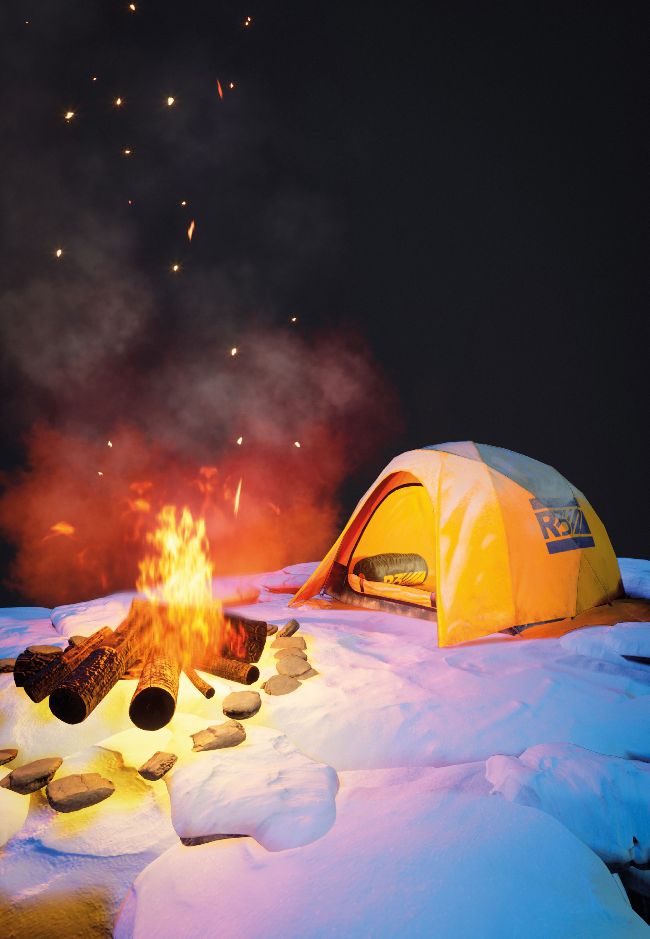MAYA | UNREAL ENGINE 4 | ZBRUSH | SUBSTANCE PAINTER | PHOTOSHOP
BUILD AN ANIMATED IN-GAME ASSET FOR UNREAL ENGINE 4
Ricky Thomas provides a step-by-step guide to developing a game asset for UE4, from initial modelling to texture creation
DOWNLOAD YOUR RESOURCES
For all the assets you need go to http://bit.ly/3Dworld-nuke

SNOWY CAMPSITE After detailing our tent asset in ZBrush, we will move onto UVing in Maya before texturing in Substance Painter
AUTHOR
Ricky Thomas
I am currently working in the field of VR creating interactive and immersive environments for the future of collaborative work over long distances. Bringing worlds to life is what I live for! ricky-thomas.com
The canopy billows and flutters as it holds on tightly against the harsh arctic winds, the fire snapping back strong as it lifts embers to the air. An interior lamp illuminates the surroundings in a deep, flickering orange glow, as light passes through the translucent barriers to the outside world.
This tutorial will run you through the development process of creating a game-ready, mildly technical asset for Unreal Engine 4; a snowy campsite tent. It covers some key areas of interest for creating real-time assets in today’s industry, such as setting up materials to make textures look higher res than they actually are, and creating animation that never loops. We discuss how modelling to scale from the very start will set you up for success throughout the project, and how to tackle building soft-body shapes from primitives.
We will create a procedural cloth displacement to simulate wind interacting with the tent canopy, set up subsurface scattering to help with believable lighting, build layered textures in Substance Painter, and go through some basic sculpting techniques in ZBrush for creating cloth. While many of the areas covered in this tutorial use these specific software packages, it should be noted that this same workflow can be applied regardless of tools or engine.
01
IMPORTANCE OF SCALE
Begin with large, simple shapes. Where possible it is best to start building to real-world scale as soon as you can, to avoid trying to scale things up or down later. This block started out as a cube roughly built to the width and height of a standard single-person tent. The result was then cut to represent the major structures of the tent.
02
ROUGH OUT THE FORM
Using a combination of extrusions and cut-outs, the basic form of the final model was rapidly achieved. At this stage it’s not worth worrying about topology or edge flow; simply get the shapes down and the mesh can be reworked later. This is especially relevant to soft-body shapes such as this, because trying to adhere to creating a clean mesh right off the bat can be somewhat limiting and still end up needing to be changed further down the line, ultimately wasting time in the long run.